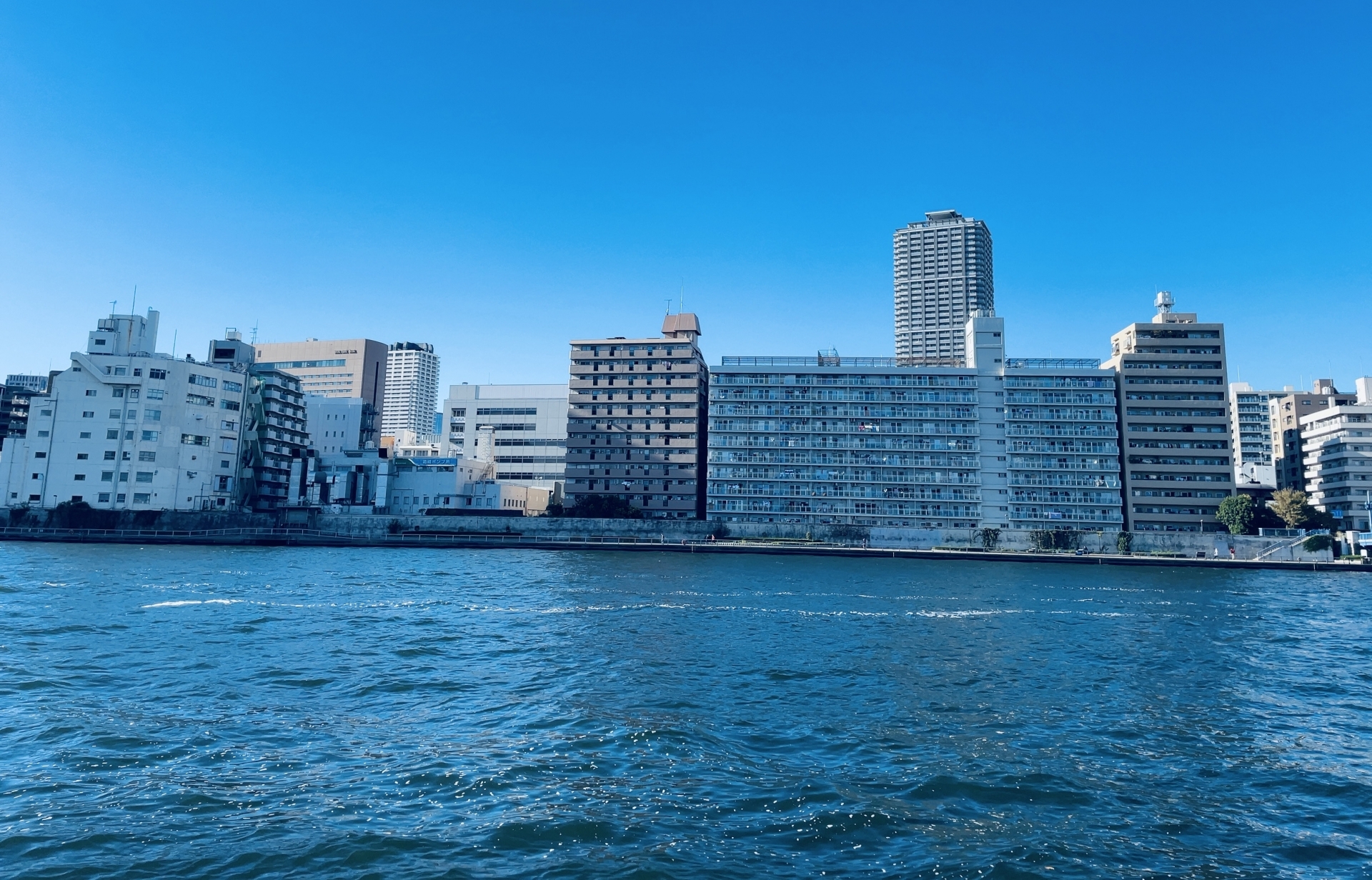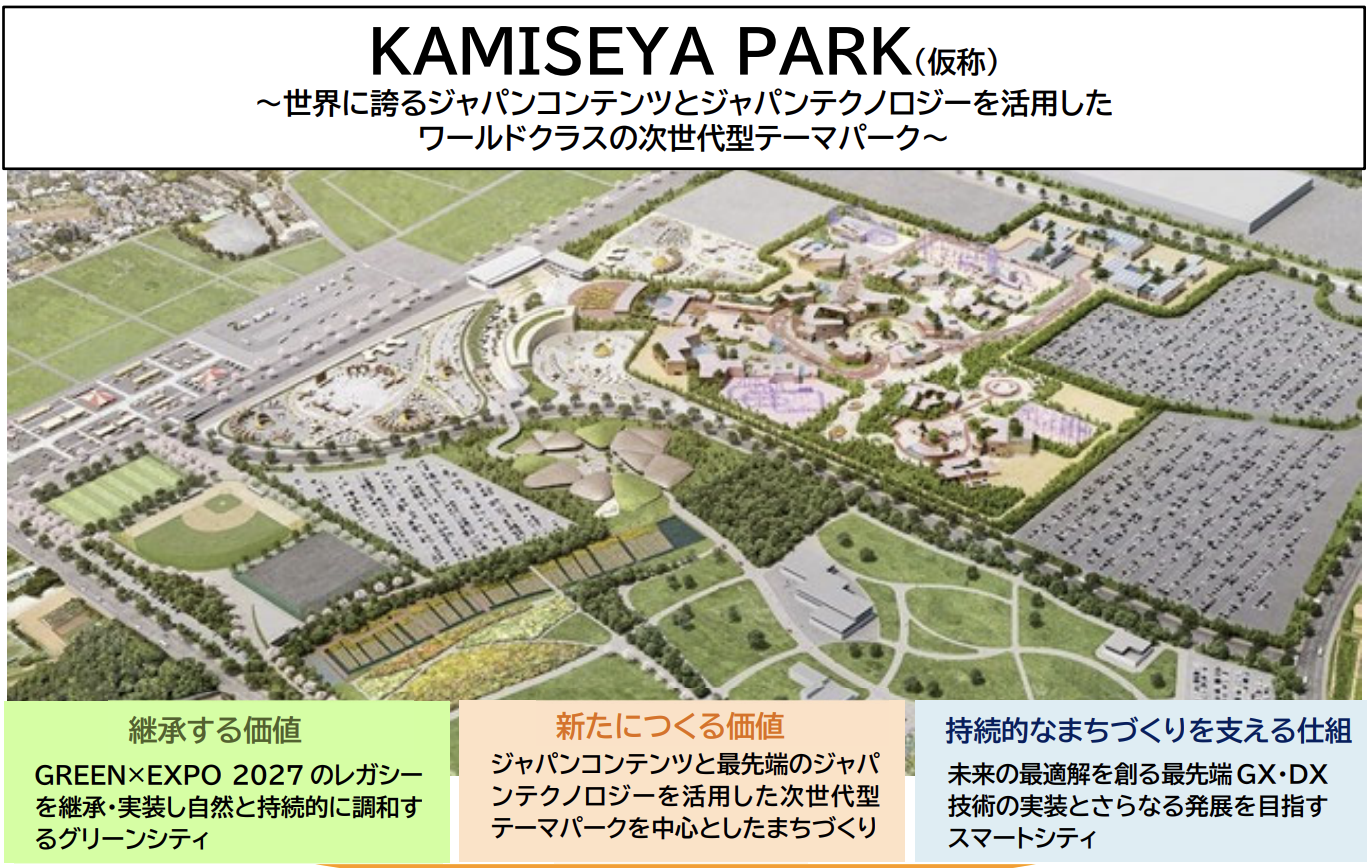When considering real estate investment or the purchase of a home, many people tend to focus on "micro" aspects such as the property's location, layout, and surrounding environment. However, real estate values are closely linked to larger economic swings, or "macroeconomic" trends. Interest rate fluctuations, inflation, and overall economic growth. All of these factors are intricately intertwined and have a tremendous impact on the real estate market.
In this article, we will professionally and clearly explain the "cause-and-effect" relationship between the macroeconomy and real estate values, based on the knowledge we have gained through dealing with many clients on a daily basis as INA & Associates, Inc. To decipher the major trends of the economy is to obtain a compass when dealing with such an important asset as real estate. We hope this article will help you make wise decisions.
Three Major Macroeconomic Factors Driving Real Estate Values
Real estate prices do not exist in isolation, but always fluctuate within the larger waves of the overall economy. Of particular importance are three macroeconomic factors :interest rates, inflation, and economic growth. Understanding the relationship between these factors is the key to predicting the future of the real estate market.
1. Interest Rates: The "Seesaw" of Real Estate Prices
Interest rates and real estate prices are often likened to a seesaw relationship. In general, when interest rates rise, real estate prices tend to fall, and when interest rates fall, real estate prices tend to rise. There are two main dynamics at work behind this.
The first is the effect on mortgages. When interest rates rise, the amount of mortgage payments increases. This reduces individuals' willingness to purchase, which in turn reduces demand and puts downward pressure on prices. Conversely, in a low interest rate environment, more people are willing to purchase real estate because they can raise funds with less burden, and prices are more likely to rise.
To give a concrete example, if a mortgage loan of 30 million yen is taken out with a 35-year repayment period, the monthly repayment is approximately 85,000 yen if the interest rate is 1%, but if the interest rate is 2%, the monthly repayment increases to approximately 100,000 yen. This difference of 15,000 yen per month translates into a difference of 180,000 yen per year, or 6.3 million yen over 35 years, which is a significant change in the burden on the buyer. Such an increase in the burden will suppress the willingness to purchase, and consequently lead to a decline in real estate prices.
Second is the impact on investment yields. Real estate investors compare the yield on safe assets such as government bonds with the expected yield (cap rate) from real estate investments. As interest rates rise, the attractiveness of government bonds increases, which in turn causes investors to refrain from investing in real estate, which is relatively risky. A decrease in investment demand results in lower real estate prices.
| Interest Rate Fluctuations | Impact on mortgages | Impact on investment yields | Impact on real estate prices |
|---|---|---|---|
| Increase | Increased repayment burdens and reduced willingness to buy | Relatively less attractive for real estate investment due to higher yields on government bonds, etc. | Downward pressure |
| Downward pressure | Repayment burden decreases and willingness to purchase increases | Yields on government bonds, etc. will decline, and the attractiveness of real estate investment will relatively increase | Upside pressure |
In fact, recent shifts in monetary policy, such as the lifting of the negative interest rate policy in March 2024 and the policy rate hike in July 2024, are extremely important for the future of the real estate market. The Bank of Japan raised its policy rate to 0.25% for the first time in nearly 16 years, signaling a path toward monetary normalization. This move marks a turning point from the long-term ultra-low interest rate environment to a "world with interest rates.
2. Inflation: Value as a Real Asset
Inflation refers to a state in which prices rise continuously. In an inflationary environment, real estate is said to be an "inflation-resistant asset. The reason for this is that real estate is a real asset.
As inflation progresses, the value of cash decreases in relative terms. On the other hand, the value of real assets such as real estate tends to increase as prices rise. For example, if building materials and labor costs rise, the price of a new property will rise, which in turn will affect the price of an existing property. Rising prices also lead to higher rents, which can be expected to increase income gains earned from real estate.
In Japan in recent years, the consumer price index has been rising by more than 2% year on year since 2022 due to soaring energy prices and the weak yen. In this environment, the cost of building materials and labor will also rise, increasing the cost of supplying new properties. As a result, the relative value of existing real estate properties tends to maintain or increase.
Furthermore, if you are purchasing real estate with a mortgage loan, inflation also has the effect of diminishing the real value of the outstanding loan balance. This is because while the face value of the loan remains the same, the value of the money itself decreases. For example, if your annual income was 6 million yen at the time you took out a 30 million yen loan, your loan balance would be five times your annual income. However, if salaries rise due to inflation and annual income becomes 7.5 million yen after 10 years, the loan balance will shrink to four times the annual income. In effect, the burden is reduced.
Positive Effects of Inflation on Real Estate Values
1. Increase in asset values: Real estate prices rise in tandem with price increases.
2. Increased rental income: Rents will rise and income gains may increase.
3. Real decrease in outstanding loans: The value of loans will decrease relative to their value.
3. Economic growth (GDP): Source of real estate demand
Economic growth, as indicated by gross domestic product (GDP), is the fundamental driver of real estate demand. As the economy grows and corporate earnings increase, employee incomes also improve. Higher incomes increase individuals' willingness to purchase homes and stimulate demand for higher quality housing. In addition, as corporate performance improves, demand for offices, stores, and factories will increase as business expands, stimulating the commercial real estate market.
Looking back at the past, Japan's real estate market has undergone major changes along with the transformation of the industrial structure. The stage of economic growth has determined the main players in the real estate market: demand for industrial land during the period of high economic growth, followed by demand for residential land as the population concentrated in cities, and more recently, demand for commercial land as the country strives to become an international financial center.
Looking at changes in nominal GDP and land prices, with the exception of the bubble period, there is a certain correlation between the two. It can be said that as the overall scale of economic activity expands, real estate values tend to increase over the long term. In fact, according to an analysis by the Ministry of Land, Infrastructure, Transport and Tourism, nominal GDP is often used as a proxy variable for rent when analyzing land prices from a macro perspective, and a statistically significant relationship between the two has been confirmed.
History Shows "Real Estate Bubble" and Macroeconomy
To better understand the relationship between the macroeconomy and real estate values, let us look back at four major "real estate bubbles" in Japan's postwar history. Each of these bubbles was closely tied to a particular phase of the macroeconomy.
| Bubble Period | Main Subject | Background macroeconomic factors |
|---|---|---|
| Around 1960 | Industrial areas | High economic growth, shift from primary to secondary industry |
| Early 1970s | Residential land | Theory of Japanese island remodeling, population concentration in urban areas |
| Late 1980s | Commercial land | Excess liquidity due to low interest rate policy, shift from secondary to tertiary industry |
| 2000s | Commercial and residential land | Creation of J-REIT market, progress in real estate securitization |
In particular, the bubble in the late 1980s was largely due to "excess liquidity" as funds flooded the market due to low interest rate policies and flowed into the stock market and real estate market. This historical lesson illustrates the significant impact that monetary policy can have on real estate markets. At that time, as a result of the Japan-U.S. Structural Accord, a low interest rate policy was adopted to increase domestic demand in Japan, resulting in excess liquidity. Money was jabbling around in the market, and its destination was the stock market and the real estate market.
The fund bubble of the 2000s is another example of how institutional changes, such as the creation of J-REITs, created a new flow of funds into the real estate market. The real estate investment market, which until then had allowed only a few large corporations to participate, saw an influx of diverse funds, including individual investors, which pushed up real estate prices. This case illustrates how structural changes in financial markets can affect the real estate market.
The difference between "good" and "bad" interest rate hikes
When considering the impact of rising interest rates on the real estate market, it is important to distinguish between "good" and "bad" interest rate hikes.
A good interest rate hike refers to a rise in interest rates that is accompanied by economic growth. In this case, while there is downward pressure on real estate prices due to higher interest rates, economic growth increases rental income and net operating income (NOI). As a result, a different market environment may emerge in which real estate prices rise moderately and cap rates also increase.
On the other hand, a bad interest rate hike refers to an increase in interest rates that is not accompanied by economic growth. For example, this is a case in which the economy deteriorates as prices continuously rise due to soaring food and energy prices overseas or a weak yen, forcing the Bank of Japan to raise interest rates. In this case, while there is downward pressure on prices due to higher interest rates, real estate prices are more likely to fall as net income growth from economic growth is not expected to increase.
Currently, the Japanese economy is in the process of creating the conditions for a "good interest rate hike," thanks to continued wage increases and aggressive corporate investment. However, uncertainties remain, such as geopolitical risks and energy price volatility. Investors are required to make a comprehensive assessment of the economic conditions behind rising interest rates.
Mechanisms of Real Estate Price Fluctuations: Understanding Cap Rates
In real estate investment, the cap rate (expected yield) is an extremely important indicator. The cap rate shows the relationship between real estate prices and net operating income (NOI), which is expressed by the following formula
Property Price = Net Operating Income (NOI) / Cap Rate
As this formula shows, if net income is constant, real estate prices and cap rates move in opposite directions. A decrease in the cap rate causes property prices to increase, while an increase in the cap rate causes property prices to decrease.
The cap rate can be further broken down as follows
Cap rate = Risk-free rate (long-term interest rate) + Risk premium - Net income growth rate
From this formula, we can see that an increase in long-term interest rates will cause the cap rate to increase, which in turn will cause real estate prices to decrease. On the other hand, an increase in the net income growth rate will cause the cap rate to decrease, which in turn will cause real estate prices to increase.
Since the early 2010s, the Japanese commercial real estate market has maintained an upward trend in real estate prices, particularly for office and multi-family residential properties, after the impact of the Lehman Shock had run its course. This is due to the Bank of Japan's "other-dimensional easing" and negative interest rate policy, which pushed down the level of interest rates and caused cap rates to trend lower. Currently, cap rates are at historically low levels, and future trends in monetary policy will have a significant impact on the real estate market.
Demographics and the Real Estate Market: Challenges in uncharted territory
One of the major macroeconomic themes is demographics. Japan's population is entering a period of decline due to the aging of the population, and the number of vacant houses is increasing. The population is aging at the fastest rate in the world, which is expected to have a significant impact on housing prices.
However, real estate values are not declining uniformly across the country. In urban centers and some highly convenient areas, "bipolarization" is expected to continue, as population inflows and redevelopment maintain or create demand, causing values to rise. In metropolitan areas such as Tokyo, Osaka, and Nagoya, population inflows are still continuing, and demand is particularly strong for properties near train stations in central Tokyo and in redevelopment areas.
On the other hand, in regional cities and suburban areas, the effects of population decline and aging are becoming more pronounced, leading to a rise in the percentage of vacant houses and a decline in real estate prices. In this environment, analyzing both macro demographics and micro characteristics of each area is the key to success or failure in real estate investment.
Conclusion: For Future-Focused Real Estate Strategies
This paper has described the impact of the macroeconomy on real estate values in terms of three main factors: interest rates, inflation, and economic growth. These factors do not move independently, but rather influence each other and form the major trends in the overall real estate market.
Interest rates, through mortgage and investment yields, have a seesaw relationship with real estate prices. Rising interest rates put downward pressure on prices, but a "good interest rate hike" accompanied by economic growth could support prices.
Inflation has the effect of increasing the relative value of real estate, the real asset. Through higher construction costs and higher rents, it contributes to maintaining and increasing real estate values.
Economic growth increases the incomes of individuals and businesses and creates demand for real estate itself. The stage of economic growth, such as industrial restructuring and urbanization, determines the leading role of the real estate market.
Understanding these cause-and-effect relationships and keeping a close eye on macroeconomic trends are essential to managing risk and aiming for better returns on real estate investments. We at INA & Associates, Inc. combine both these macro perspectives with a micro perspective that assesses individual properties to support each client's asset development.
The real estate market fluctuates in the short term due to a variety of factors, but in the long term it follows the major macroeconomic trends. Understanding the three factors - interest rates, inflation, and economic growth - and how they interact with each other is the first step to successful real estate investment.
If you are interested in discussing your real estate needs or in more in-depth market analysis, please do not hesitate to contact us. Our professional and experienced staff will be happy to assist you in developing a successful real estate strategy.
Frequently Asked Questions (Q&A)
Q1. Will real estate prices really go down if interest rates rise in the future?
A1. It is not necessarily certain. Rising interest rates will put downward pressure on prices, but at the same time, it has been pointed out that if "good interest rates rise" accompanied by economic growth, an increase in rental income will support prices, and as a result, both real estate prices and cap rates may rise moderately. The key is to assess the overall economic conditions behind rising interest rates. In a "world with interest rates," real estate prices are projected to maintain moderate appreciation.
Q2. In Japan, where the population is declining, will real estate values continue to fall in the future?
A2. It is undeniable that there will be downward pressure overall. However, in central Tokyo and some highly convenient areas, demand will be maintained or created by population inflows and redevelopment, and values will rise. It is important to analyze both macro demographic trends and micro characteristics of each area. In particular, population inflows are still continuing in urban centers of major metropolitan areas such as Tokyo, Osaka, and Nagoya, and demand is strong for properties near train stations and in redevelopment areas.
Q3. What macroeconomic indicators should I pay attention to when starting a real estate investment?
A3. First, we recommend that you regularly check the policy interest rate andmonetary base released by the Bank of Japan, the consumer price index (CPI) released by the Ministry of Internal Affairs and Communications, and the gross domestic product (GDP) released by the Cabinet Office. These indicators can be checked at the General Contact Point for Government Statistics (e-Stat) and other websites. The Real Estate Price Index published by the Ministry of Land, Infrastructure, Transport and Tourism, the Urban Area Price Index published by the Japan Real Estate Institute, and the Real Estate Investor Survey are also useful for understanding trends in the real estate market.
Q4. Do real estate prices always rise when inflation rises?
A4. Inflation is a factor that pushes up real estate prices, but it does not necessarily guarantee higher prices. If inflation increases but interest rates rise substantially at the same time, the downward pressure on prices due to higher interest rates may exceed the upward pressure on prices due to inflation. Also, in the case of inflation without economic growth (stagflation), demand may decline and prices may fall as incomes do not increase. The important thing is to judge the three factors of inflation, interest rates, and economic growth in an integrated manner.
Q5. What is a cap rate? How can I utilize it?
A5. The cap rate (expected yield) is an indicator of the profitability of a real estate investment, calculated as "net operating income (NOI) divided by the property value. The higher the cap rate, the higher the yield investors are looking for, and the lower the real estate price. Conversely, a lower cap rate means that investors are satisfied with lower yields, and property prices are higher. By looking at cap rate trends, one can read changes in investor sentiment in the real estate market as a whole and in the interest rate environment. The Japan Real Estate Institute's periodic "Real Estate Investor Survey" publishes cap rates by area and property type, which can be used as a reference for investment decisions.

Daisuke Inazawa
Representative Director of INA&Associates Inc. Based in Osaka, Tokyo, and Kanagawa, he is engaged in real estate sales, leasing, and management. He provides services based on his extensive experience in the real estate industry. Based on the philosophy that “human resources are a company's most important asset,” he places great importance on human resource development. He continues to take on the challenge of creating sustainable corporate value.

.png)












